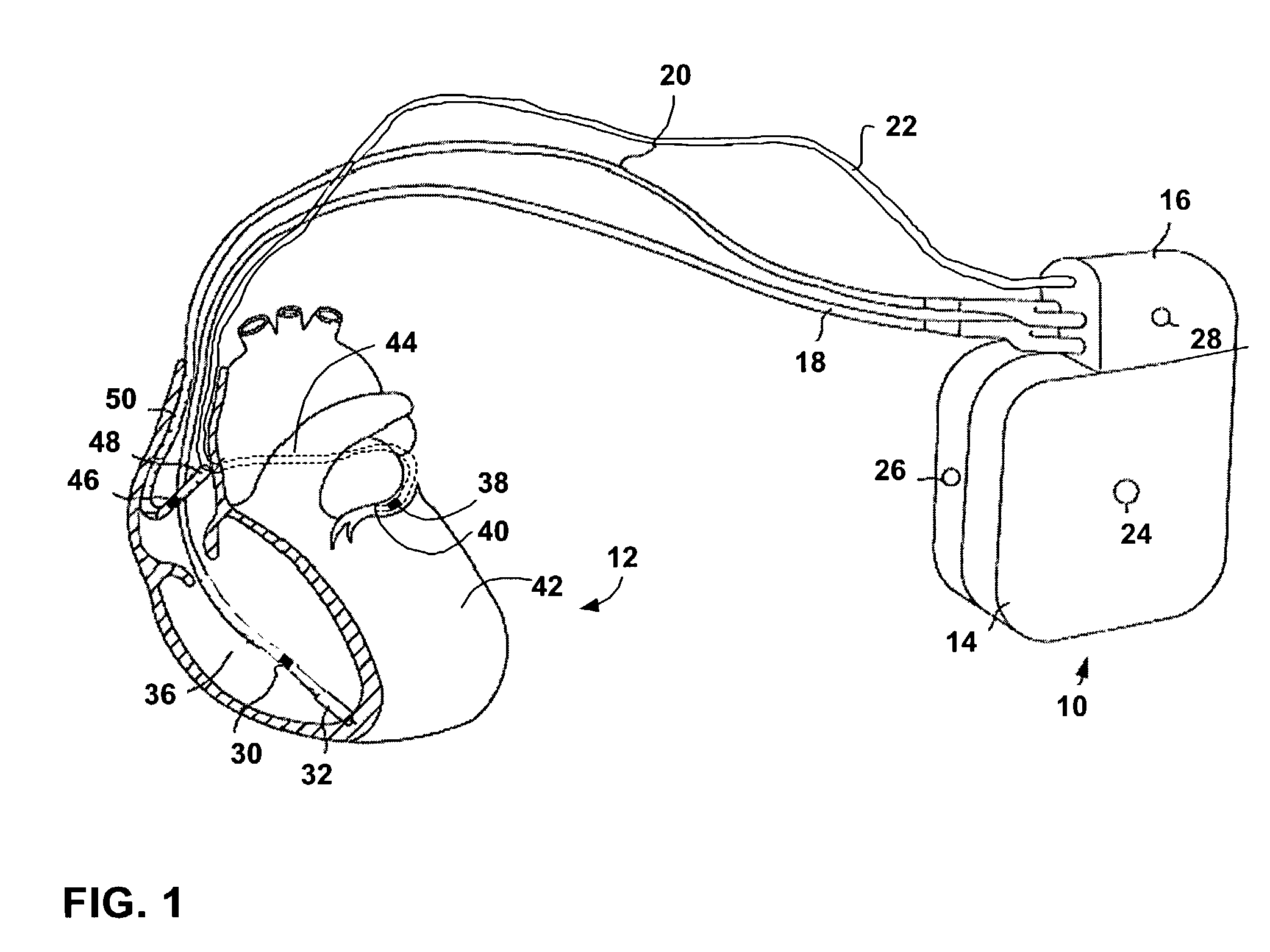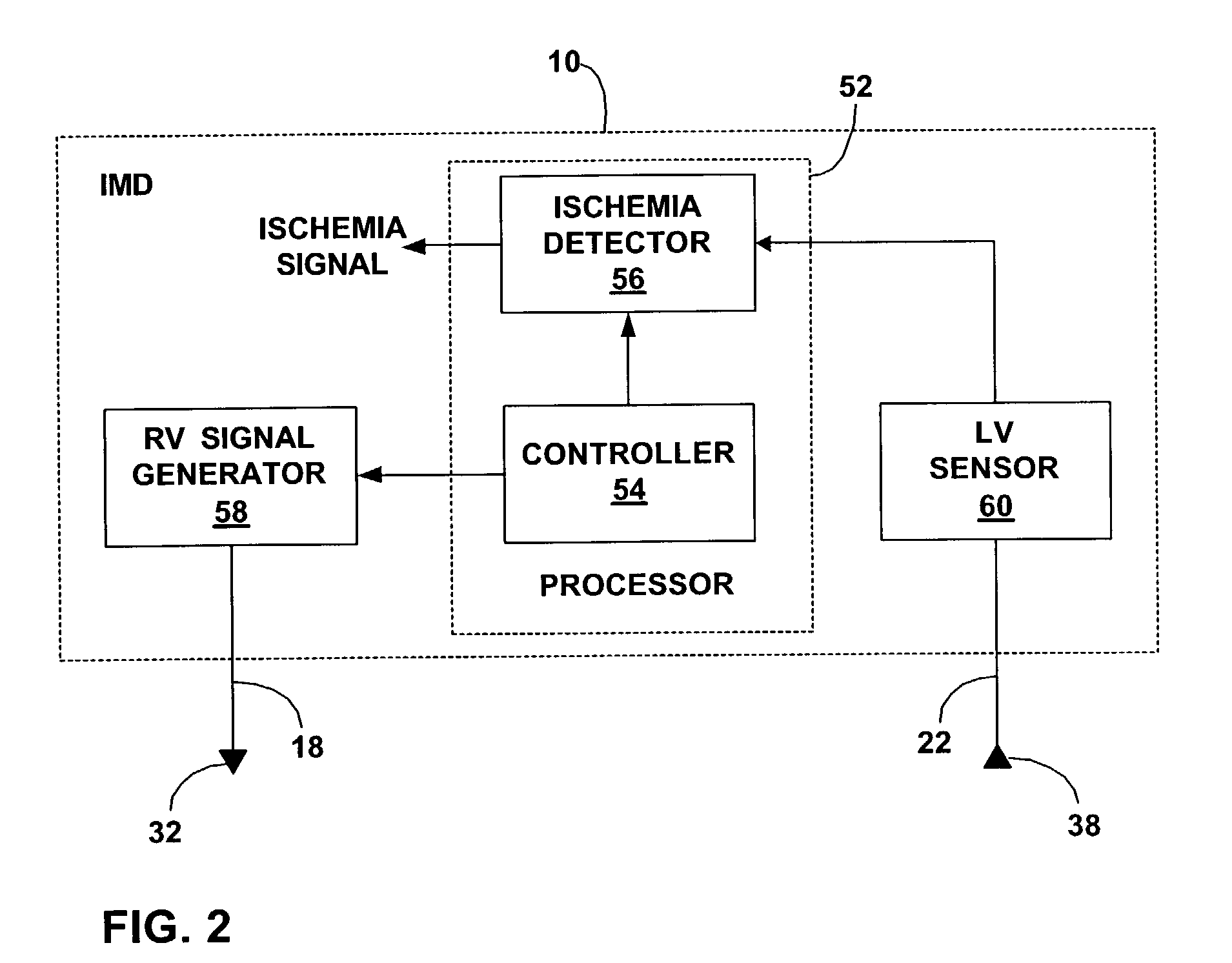Ischemia detection based on cardiac conduction time
a technology of cardiac conduction time and ischemia detection, applied in the field of cardiac health, can solve the problems of unreliable use of the st segment as an indicator of ischemia, myocardial ischemia, and myocardial infarction, so as to avoid false indication of ischemia events, increase the specificity of ischemia detection, and reliable indication of an ischemic episode
- Summary
- Abstract
- Description
- Claims
- Application Information
AI Technical Summary
Benefits of technology
Problems solved by technology
Method used
Image
Examples
Embodiment Construction
[0027]FIG. 1 is a diagram illustrating an exemplary implantable medical device (IMD) 10 in association with a human heart 12. IMD 10 may be dedicated to monitoring of heart 12, or integrate both monitoring and therapy features, as will be described. In accordance with the invention, IMD 10 is configured to detect cardiac conduction velocity, via measurement of conduction time, and detect myocardial ischemia based on the detected conduction time. Using conduction time, IMD 10 detects changes in the state of heart 12, and thereby obtains an indication of heart tissue conditions suggestive of myocardial ischemia within the heart 12.
[0028]When a change in cardiac conduction time reveals ischemic conditions, IMD 10 indicates an ischemic episode. Conduction velocity across cardiac muscle tends to decrease significantly when oxygen supply to the heart is reduced. At the same time, conduction time tends to increase. Consequently, the conduction time between two fixed electrodes can provide ...
PUM
 Login to View More
Login to View More Abstract
Description
Claims
Application Information
 Login to View More
Login to View More - R&D
- Intellectual Property
- Life Sciences
- Materials
- Tech Scout
- Unparalleled Data Quality
- Higher Quality Content
- 60% Fewer Hallucinations
Browse by: Latest US Patents, China's latest patents, Technical Efficacy Thesaurus, Application Domain, Technology Topic, Popular Technical Reports.
© 2025 PatSnap. All rights reserved.Legal|Privacy policy|Modern Slavery Act Transparency Statement|Sitemap|About US| Contact US: help@patsnap.com



